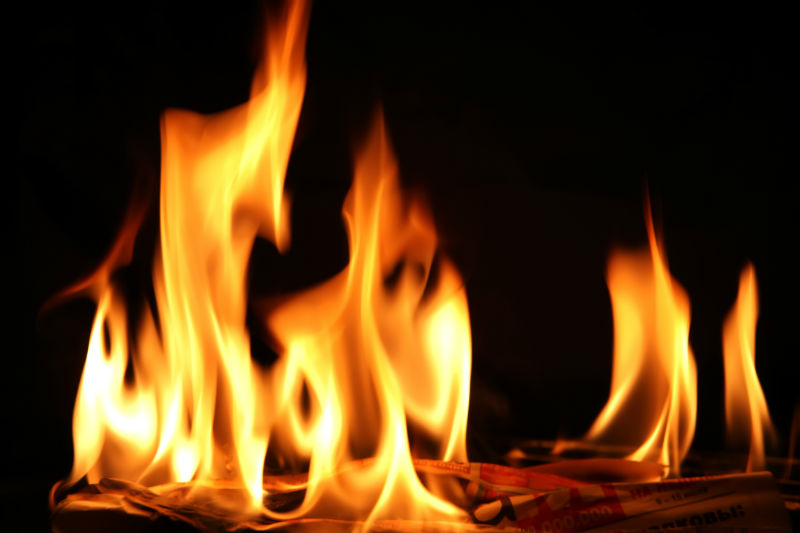 When wood is heated, burnable hydro-carbon gases are released. When the gases get hot enough and mix with air — there is fire. When the fire is not burned hot enough, the unburned gases condense and collect on the inside of stovepipes and flues as runny acids and liquid tars that harden into creosote. Creosote is flammable. If what’s in the chimney ignites – there is a chimney fire!
When wood is heated, burnable hydro-carbon gases are released. When the gases get hot enough and mix with air — there is fire. When the fire is not burned hot enough, the unburned gases condense and collect on the inside of stovepipes and flues as runny acids and liquid tars that harden into creosote. Creosote is flammable. If what’s in the chimney ignites – there is a chimney fire!
What contributes to a fire that is not hot enough? –a fire that encourages condensation? –a fire that makes creosote?
A cool fire :
A flue that is too big for the appliance it serves
Poor woodburning habits:
- Severely limiting the air supply in a stove to achieve a long burn causes a sluggish draft and a smoldering fire that doesn’t get hot enough to burn the hydro-carbon gases.
An oversized or out dated stove:
- A stove that is too big for the space it heats, is likely to be burned in a closed down, creosote-producing way
Steam from green or wet wood – remember the heating up part we talked about above? Well, green or wet wood has to dry out before it can heat up enough to release the gases that can burn. As it heats it releases steam that lowers the flue temperatures. Lower flue temperatures cause the other hydro-carbon gases already in the flue to cool and condense on the sides of the flue.
What does creosote look like?
It has various forms.
- Sooty powder
- Crisp and crunchy
- Gummy drippy mess
- Hard glaze
- Burnt marshmellows
Is there any way NOT to make creosote?
…or at least minimize how much is made? Yes!
- Install an insulated flue liner that is properly sized for the appliance you are using (i.e. fireplace, wood stove insert, free standing heater).
- Burn smaller hotter fires. (use seasoned wood or a mix of seasoned and green wood)
- Replace an old stove with a new unit correctly sized for the space you are heating.
So what if you already have a creosote problem?
Find an experienced CSIA Certified Chimney Sweep right away. Put your fireplace or wood stove system on a regular inspection and maintenance schedule.
Chimney fires can burn like a blast furnace and sound like a freight train and look like a fireworks display. Sparks or burning embers from the fire can put your roof and home at risk. Chimney fires can also smolder silently so hot and for so long that it eventually catches wooden structure close to it afire simply from heat transfer. A chimney fire is definitely on the short list of things to be avoided. If you think you have experienced a chimney fire, call us for a free copy of the Chimney Safety Institute of America’s public service brochure entitled What You Need to Know After a Chimney Fire!
Keeping fire in its place in your home is a priority for Blue Sky Chimney Sweeps | Bless Your Hearth. Call today (864-682-5422) to schedule your chimney inspection and sweep service.

